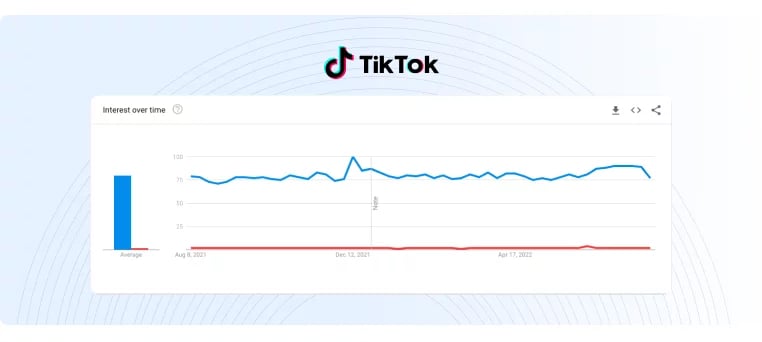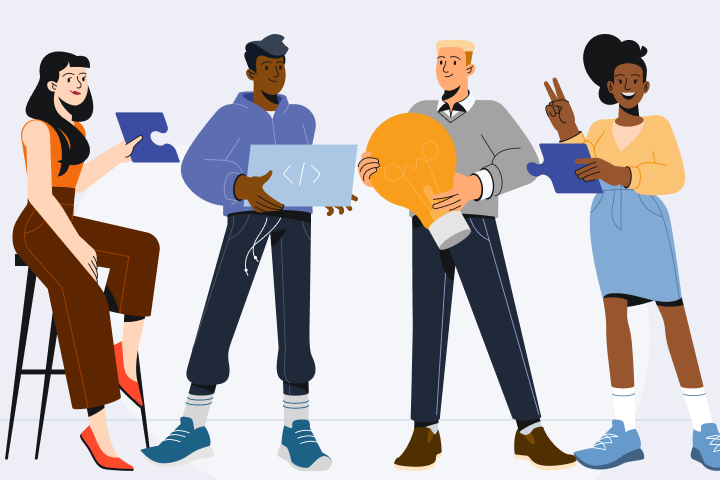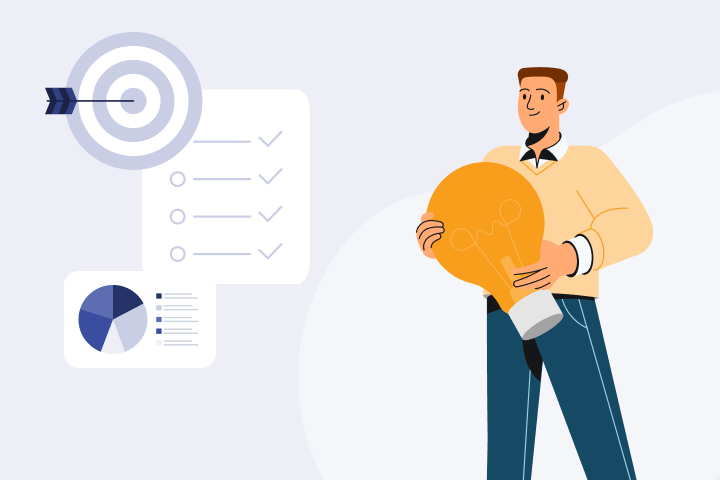Everything You Need on How to Measure Brand Awareness
If you’re reading this article, chances are you’re already aware of the impact brand awareness can have on your company but you’re struggling with measuring brand awareness. Unlike other marketing campaigns' KPIs (key performance indicators), brand awareness is a bit harder to calculate.
This article will teach you how to measure brand awareness. You’ll identify, understand, and use key elements of a successful brand awareness campaign, so you can increase revenue and improve your brand’s overall image.
Why Run a Brand Awareness Campaign With Your Audience
Knowing how to measure brand awareness is definitely one of the most difficult tasks that you can take on when creating your brand awareness campaign. First of all, this is a long-term process that, even in the best-case scenario, can go pretty slowly.
Secondly, building a brand is all about connecting with people, establishing trust, and setting a higher value for that brand. In times when everyone and their pet is on social media channels, learning how to measure brand awareness is a skill that will set you apart in the crowded digital marketplace.
When you can measure your brand awareness and leave a memorable impact, brands benefit by:
-
Having recognized brands are automatically leaders in the industry
-
Seeing a greater social impact
-
Lowering costs for new customer acquisition due to proven value
-
Greater chances for business expansion (think Apple: from personal computers to MP3s)
Now that you know why you should pay close attention to a brand awareness campaign, let’s learn how to measure brand awareness practically.
Start By Asking the Right Questions
Whenever you plan to measure key performance indicators, it’s essential to understand that not all KPIs are created equal. Some are straightforward to measure, while others can be a bit tricky.
Often they are broken down into three categories: awareness, consideration, and action. The KPIs to measure these goals depend on the goal you’re trying to achieve. For example, ‘clicks’ would be a terrible measurement of awareness as people can be aware of your brand without clicking on your content. Likewise, impressions would not indicate action.

To better understand them, let’s divide the awareness metrics listed below into 2 categories: quantifiable and comparative.
What are Quantifiable KPIs?
Quantifiable KPIs are all those that can be easily measured, especially when you have the right tools for the job. The so-called vanity metrics fall under this category: number of likes on your posts, shares, engagement, number of followers, organic traffic, etc.
What are Comparative KPIs?
Comparative KPIs are those you can’t measure directly but will give you a better grasp of how many times people have heard about your brand. These can be in the form of mentions by third parties, who tagged your brand in a comment or a post, or if someone is using your branded hashtag.
The plot twist here, however, is that you can’t keep track of dark social (i.e. the shares that happen in private messages, texts, or emails). People might be more aware of your brand than you think, but unfortunately, there is no way to measure it.
Why Does This Matter?
So, what questions can make a big difference when creating your marketing strategy and building brand awareness over time? Here’s a list that will help you with your endeavor:
-
Is our target audience familiar with our brand?
-
Do they put us in the same category as our competitors?
-
Do they prefer us or our competitors?
-
Do we stand out in any way?
-
What is the main feeling our brand evokes in people’s conversations?
-
What are the bounce rates related to our referral traffic statistics and how do we improve them?
-
Do our vanity metrics measure actual ROI? If not, how can we improve it?
-
What are our strongest brand health indicators?
-
Which benchmarks should we set to track our progress over time?
When you have the right set of questions, the rest is analyzing the answers.
Pay Attention to Your Website’s Traffic
This falls under the quantifiable category and it’s quite straightforward - people visit your website because they have heard about you through your ads, social media platforms, or your email newsletter, and want to learn more.
It’s called direct (or organic) traffic and you can use a tool like Google Analytics to measure how many people visit your website regardless of whether they click on a link you provide through your marketing campaign, or they type your name in the search engine.
The only setback with this metric is that you can’t know why your website traffic has increased - was it because of a super-helpful blog you’ve published, an effective social media campaign, or maybe a great tutorial video?
Also, pay close attention to bounce rates. If people click on your website and then leave immediately, that means they didn’t mean to click on it, or what lured them in doesn’t necessarily mean it is helpful enough to stay on your page. Your goal is to have the lowest bounce rate possible.
Referrals and Backlinks as Part of Your Advertising
Tightly knit with your website’s traffic s is your indirect traffic — traffic earned through other people’s referrals and backlinks. This type of traffic usually comes through other businesses or individuals mentioning your name, website, or piece of social media content you’ve published that has been helpful to them. They share it (or the resource) with their audience, adding a link to your website, and voila — indirect referral traffic that you didn’t even have to pay for.
That’s why being professional and genuinely interested in offering help is so important for your brand’s awareness efforts. If you have solid, helpful, insightful content, word spreads around. And what can be better than a free advertisement and honest, positive feedback, right?
Bonus tip: Backlinks and referrals can do wonders for your SEO. Increase your online visibility by offering quality content to which others want to link. Tools like Semrush are great for this as you can use their link-building tool to spot new opportunities for links and track your progress over time.
Social Engagement of Your (Potential) Customers
Social media engagement is all about vanity metrics, but ones that can be quite important to measure like your reactions (likes, angry, laughing), comments, shares, and the number of social media followers you have. These can all help you understand how your posts resonate with your audience and the potential reach you might have with a post.
But don’t be fooled - measuring social engagement isn’t about feeding anybody’s ego. It’s about being present in your target group’s lives so that when they decide to make a purchase, your brand will be the first on their mind. Statistics say that having a strong social media presence gives a 100% higher lead-to-close rate when compared with outbound marketing. It’s no wonder savvy marketers put social media engagement as a top priority in their campaigns and actively embrace social media to boost their presence.
One thing to be careful of: Make sure that your vanity metrics show actual ROI. Because if you’re in it just for the thumbs up and not seeing an actual return on investment, it’s not time or money well spent.
Social Listening (Not Eavesdropping on People)
Social listening is one of the comparative metrics that goes well below the surface of measuring - it allows you not only to see which platform is the loudest about your brand but how people talk about you i.e. how you are perceived. Tools like Mention also help you identify those voices on social media so that you can keep a pulse on critical social media signals.

The great thing about monitoring other people’s conversations about your brand is that it’s not biased - you get to see what they feel about you so you can double down on the good stuff and adjust the rest. This will give you insight into your target audience’s thoughts and feelings, their needs, or even recommendations for your improvement.
The not-so-great thing is the dark social aspect. No matter what social listening tool you’re using, you’ll never be able to see what third parties are saying about you in their private messages or calls. What you can do, though, is focus on the metrics you do have and work from there.
Brand Search Volume
Direct traffic to your website speaks volumes about your brand awareness. Reviewing your direct traffic can tell you the strength of your brand’s name or branded keywords you might have (hashtags) in search engines to see if your marketing strategy is on point.
Data about the brand search can help you get an idea about how much people are interested in your brand, your products, and/or your services. It’s also a great way to keep track of your competitors and important trends in your industry.

Interest over time on the term ‘TikTok’
Try using Google Trends or any other keyword search tool like Moz, Semrush, or Ahrefs to always be aware of what your target audience is searching for and adapt your campaigns accordingly.
Share of Voice
Another comparative metric that cannot be directly measured is the portion your brand has in visibility compared to your competitors (a.k.a share of voice). In other words, where do you rank in comparison to your direct competitors?
Share of Voice refers to the market your brand owns as compared to your competitors. Platforms like Talkwalker can help you measure, and visualize this concept.

Source: Share of Voice Guide for Marketers
To have the best idea possible of where you stand as a brand, try not to use your branded keywords. For example, if you’re in the food industry, search for more general keywords like “best hot dogs” instead of “(your brand’s name) hot dogs.” This will give you a clearer idea of the percentage of mentions of your brand compared to your competitors.
Employee Advocacy
Unofficially dubbed as every business’s secret weapon, employee advocacy is one of the most important tools you need for increasing brand awareness. It’s a fact that your employees’ posts get higher reach and better engagement than posts shared by corporate, so leverage employee advocacy to maximize visibility and trustworthiness among your potential customers.
When it comes to actually measuring employee advocacy as a metric for your brand awareness campaign, SEO guru, content marketer, and strategist, Jacob McMillen, has this to say:
“I think the #1 metric for measuring employee advocacy is referrals. Are new hires joining as a direct result of an existing team member OR do they cite specific interactions with your brand/employees that occurred prior to being made aware of the role opening? Recruits and new hires will have a better qualitative understanding of what made them interested in your brand than any quantitative metrics that can be realistically tracked.”
An employee advocacy software like GaggleAMP helps you not only create suitable content for employees to share, but also keeps track of which employees get the most likes, shares, and engagements while gamifying the whole process. This way you can see the impact on your employee advocacy efforts and the impact on your brand awareness being generated by your employees.

Before You Go
The concept of brand awareness can be tricky; you can never measure it completely and precisely but you do need to try. You should have an idea of where your brand stands compared to competitors.
Just remember to set benchmarks and track your progress over time. Mix and match and never focus on just one metric. Different combinations are key here because to get the complete picture you need to look at all the pieces like you would a jigsaw puzzle. The more areas you cover, the clearer the picture of your brand.













